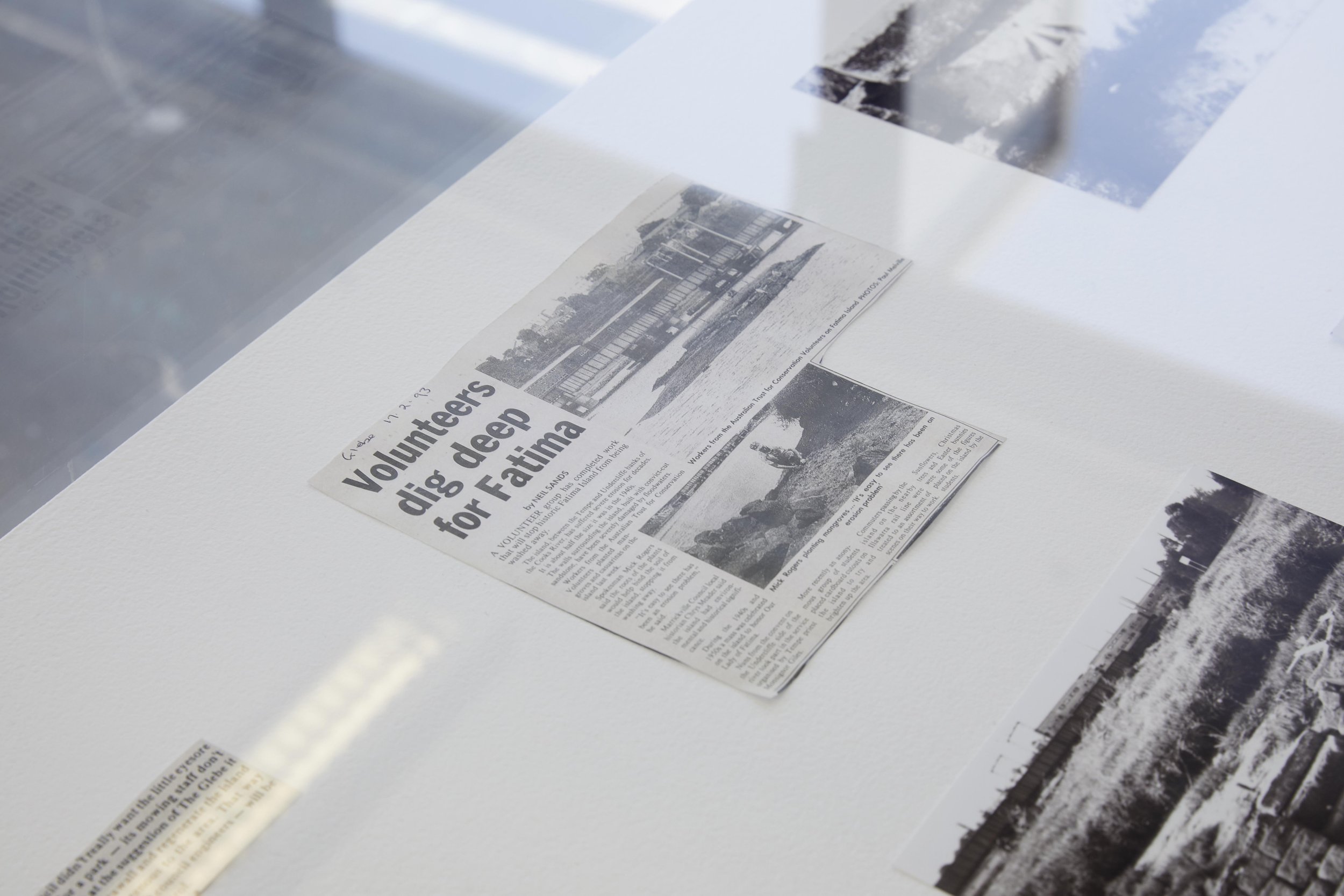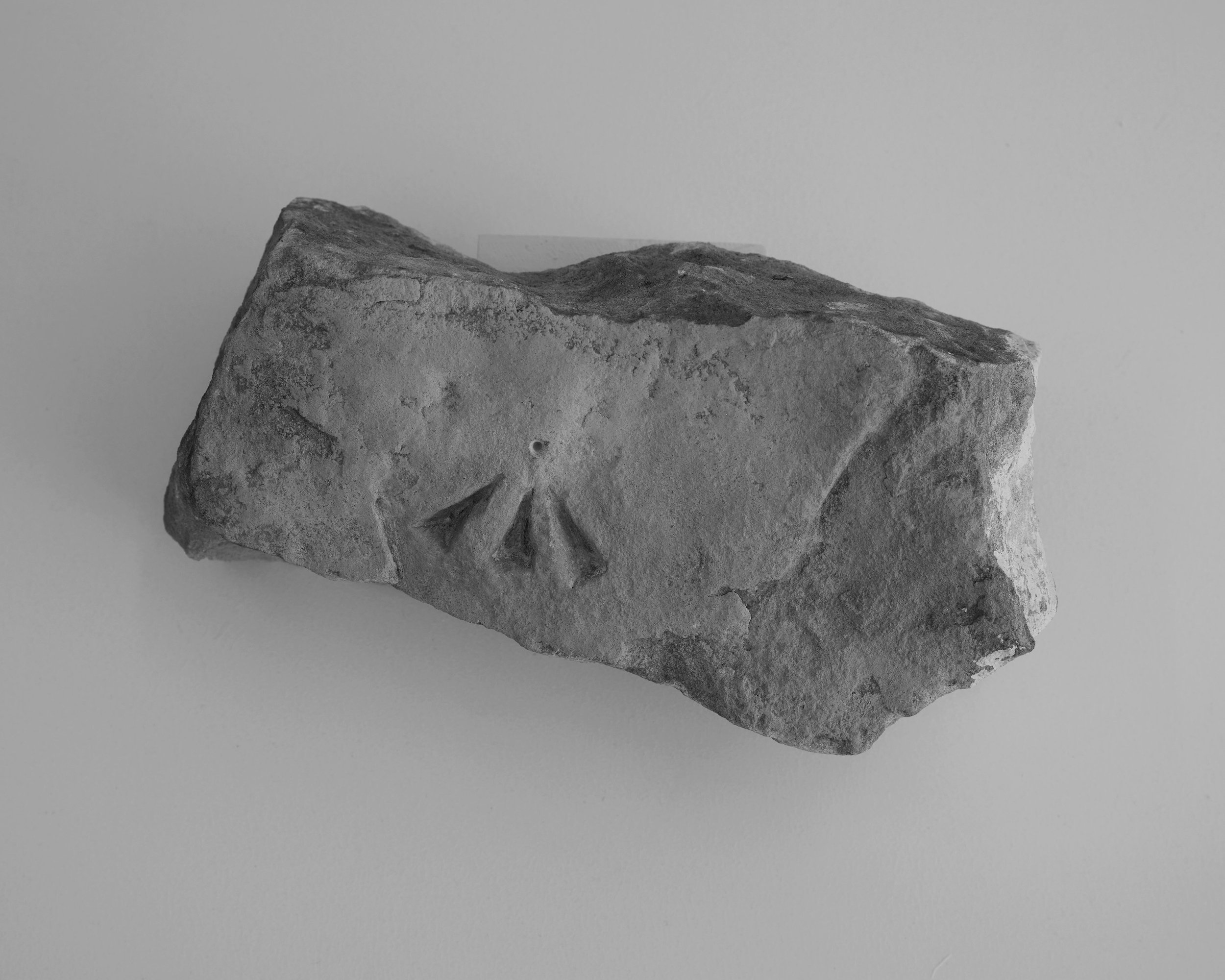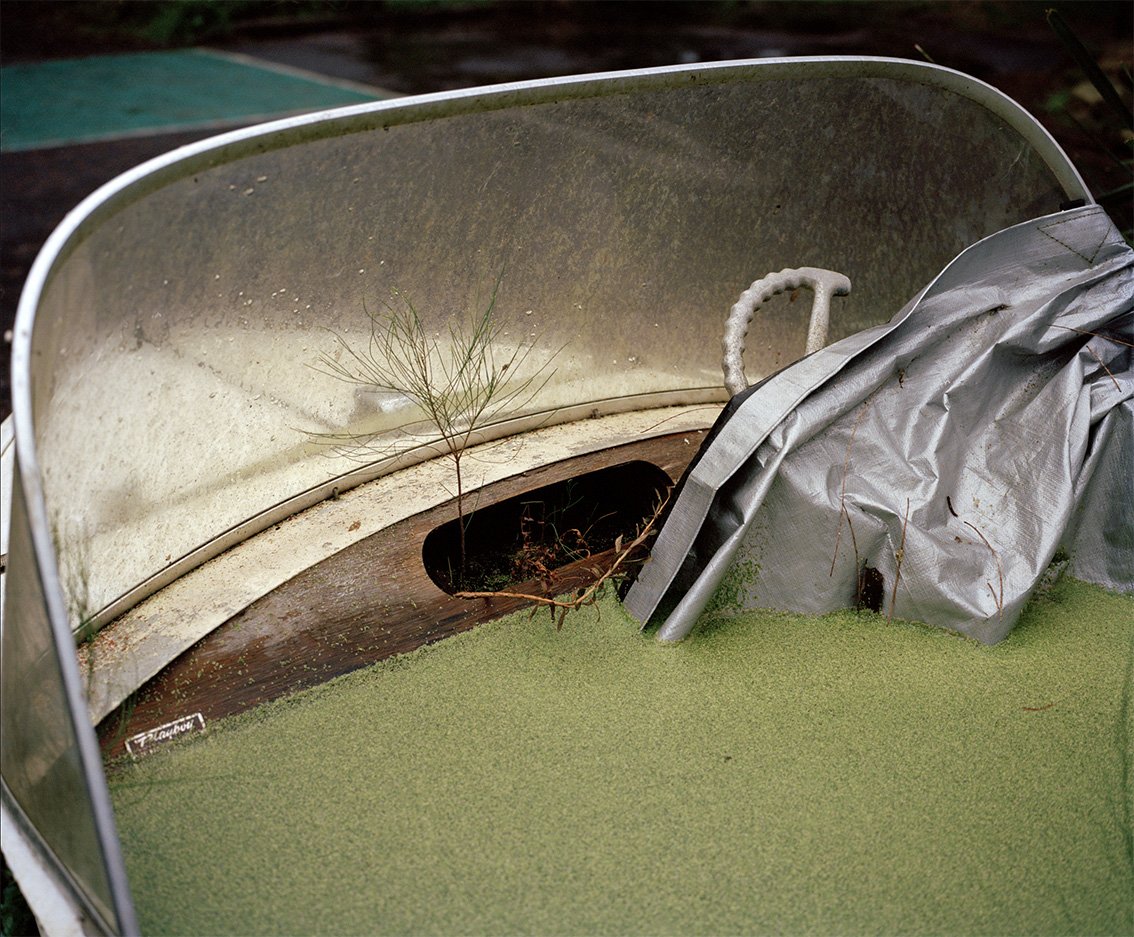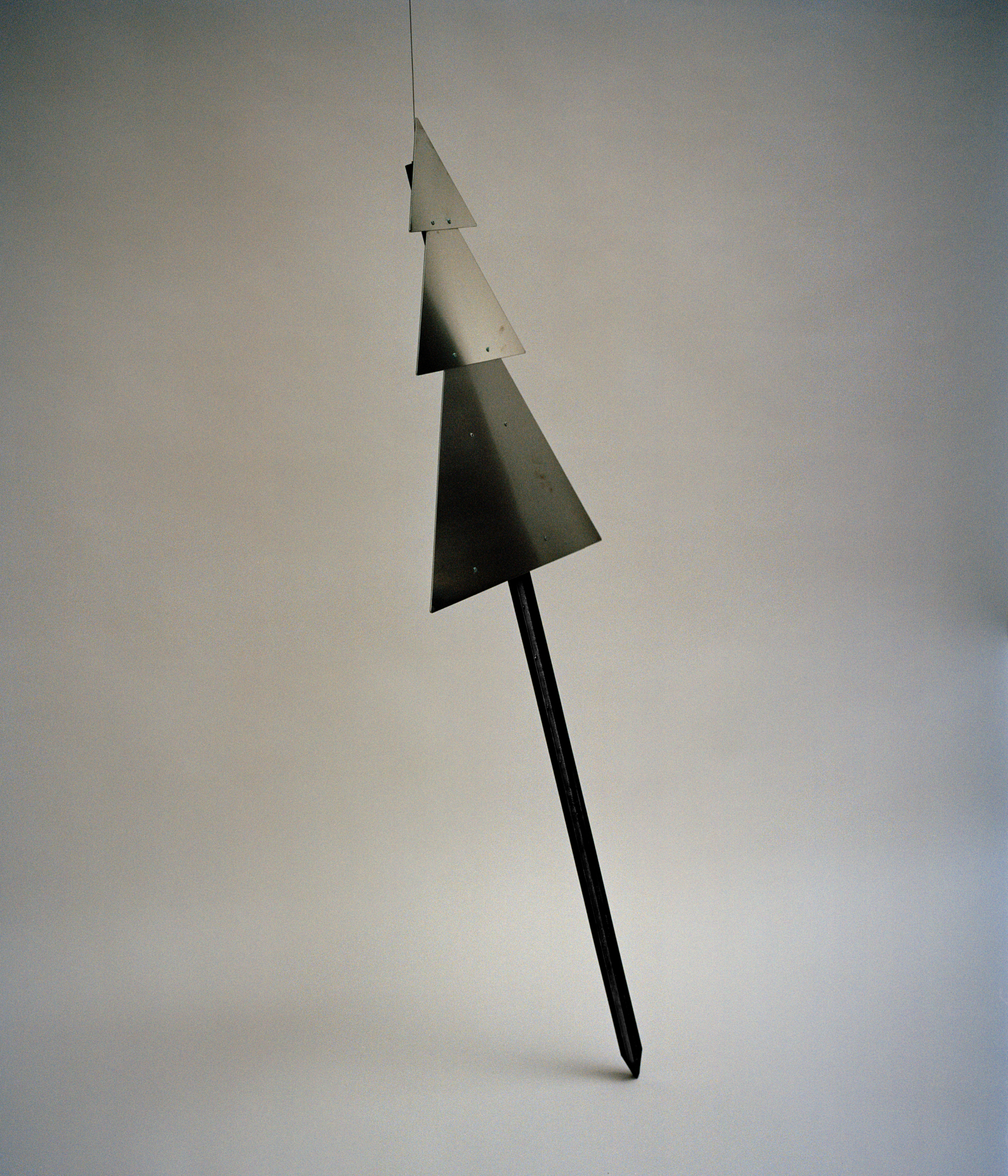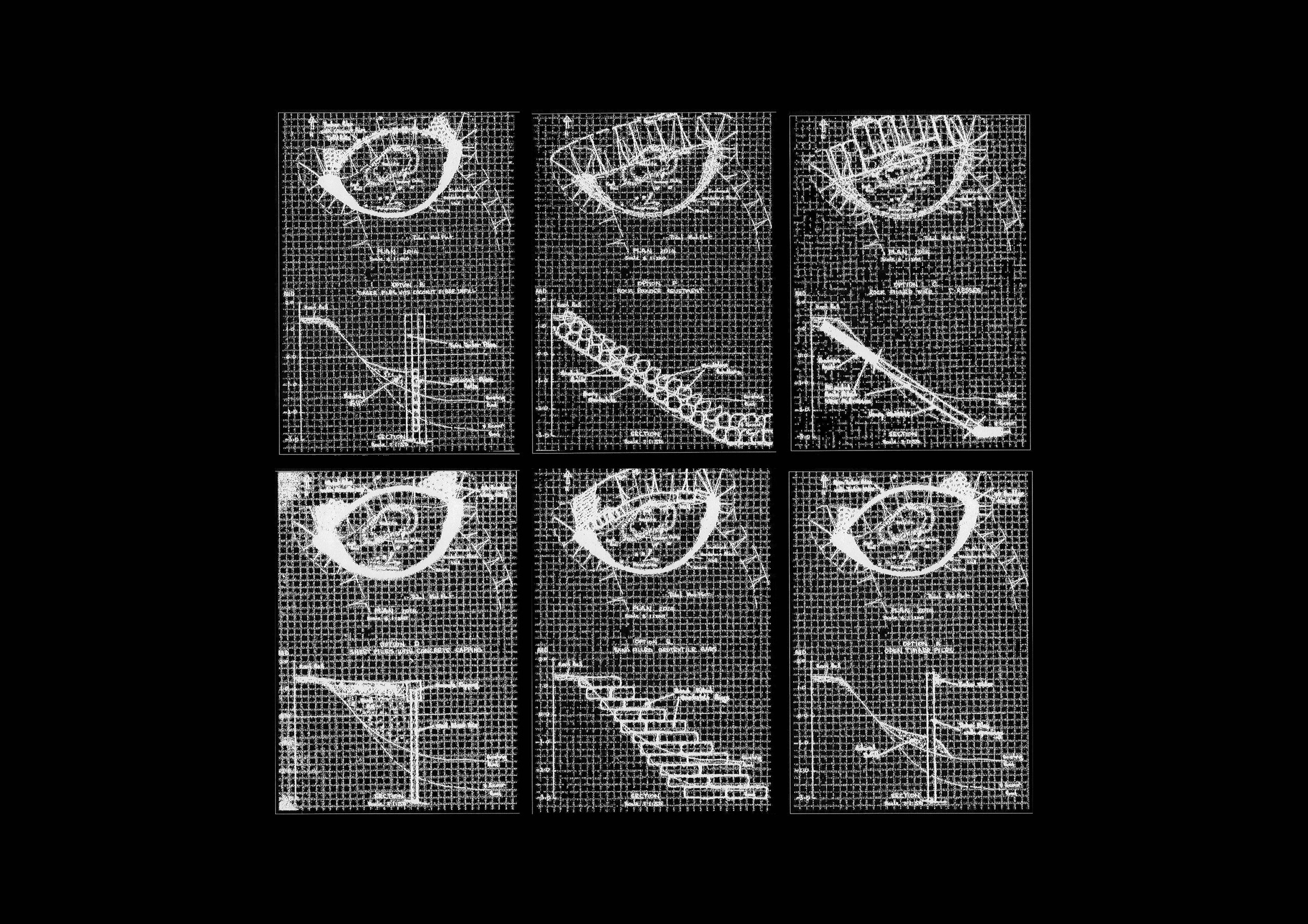Henry Butterworth: Returning the Banner to Fatima Island. Performance video work, 2:45, Mini DV camcorder tape digitised. 2023
Fatima Island is a small, inconspicuous piece of land, sandwiched between the Princes Highway and the Illawarra train line on the Cooks River in Sydney/Eora. Goolay'yari is the Indigenous name for the Cooks River, inhabited by Gadigal, Wangal, Dharug, and Gameygal people prior to Captain Cook's arrival in 1770, marking the onset of colonisation in Australia. Sandstone blocks, once convict-built and used to fortify the island, are now largely gone, but remnants like broad arrow markings hint at its colonial past.
The name 'Fatima' originates from a 1951 rosary pilgrimage to the island, organised by a local church to honour Our Lady of Fatima in connection to a Virgin Mary apparition in Portugal. Fatima Island has provided refuge for wildlife, displayed property for sale signs, hosted religious events with camels and christmas lights, and most recently, become a protest site with the local council for its conservation.
The project began with a daily train commute across Cooks River. The island’s form would shift with the river's tides: at low tide, it revealed its large sandbank of silt and sandstone blocks, at high tide, it submerged, leaving two mangrove trees above the water. One day, a sign emerged: "Help save me, I’m the last island on Cooks." The sign gave the island agency, speaking in the first person, calling out for help, and referring to its uncertain future.
The river is considered to be one of the most polluted waterways in Australia. Running through historically industrial areas, Fatima Island has been affected by rapid erosion due to dredging, pollution, human interference and rising sea levels. It is known to be the last remaining island on the Cooks River.
The Last Island on Cooks (2022) documents a site that may eventually disappear as an act of preservation. The work investigates the complexities of this site through the restructuring of archival material, photographic documentation, sculpture, performance and appropriation of lost artefacts. These methods are employed as a way of resuscitating fragments of history to reveal its potential as a multi-durational site.
